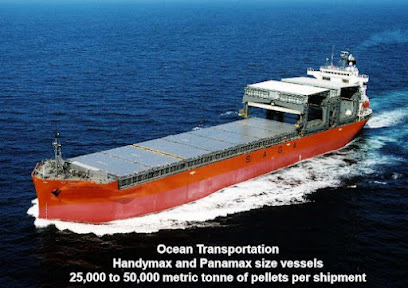The trend of using wood pellets globally has not been long, it only started around the early 2010s and a number of countries responded quickly so that their wood pellet industry grew rapidly as part of their economic engine in line with the global trend for decarbonization and green economy or bioeconomy. The readiness of a number of countries to respond to this opportunity is also not without reason but indeed their insight and knowledge have supported them to do so. Indonesia as a tropical country with vast land and abundant human resources should also be able to boost the opportunities of this wood pellet industry so that it becomes one of the world's main players.
Vietnam and Latvia are two countries in the world that are currently leading the wood pellet industry, there is even the largest wood pellet factory in the world there, for more details read here. Initially, both countries also started this industry from a small capacity. For Vietnam, Vietnam's wood pellet production began in 2012 with a very small capacity of around 175 tons/year and currently in 2021 or around 9 years later, production has reached around 4.5 million tons/year, placing Vietnam in second place as a world wood pellet producer, after the United States. The total production of 4.5 million tons/year is supplied from 74 wood pellet factories in Vietnam. In 2020, 3.2 million tons of wood pellets were exported to Japan and Korea for power plants with an export value of nearly USD 351 million. In addition to Korea and Japan, Vietnam's wood pellet production is also exported to Europe.
Initially, Vietnam's wood pellet production used waste from the furniture industry. Furniture waste in the form of sawdust from the industry was dry and its particle size was suitable for wood pellet production, so equipments such as hammer mills and dryers were not needed. Many Vietnamese wood pellet factories at that time did not have hammer mills or dryers. With raw materials ready to be pelletized, the cost of producing wood pellets was very cheap, plus the cost of labor was also cheap. However, as the demand for furniture industry waste for wood pellet production increased, the availability of these raw materials became increasingly scarce, so that new wood pellet factories could no longer use these wastes. Waste from other wood processing industries such as sawmills and veneer factories also became raw materials. Furthermore, with the increasing production of wood pellets, forest wood waste and other round wood became the next source of raw materials. This also increased production costs because tools such as hammer mills and dryers were needed so that the raw materials were ready to be pelletized.
Meanwhile, Latvia, as a small country in northern Europe, saw an opportunity to lead in this growing industry. With almost half of its territory covered by forest, Latvia had the natural resources to produce wood pellets. In the early 2000s, with government support for responsible forest management, sustainable wood production was introduced, including support for entrepreneurs who wanted to start producing wood pellets. It wasn’t long before the world caught on. Countries across Europe, including the UK, Denmark and Italy, began relying on Latvian wood pellets for their heating and power plants.
Despite being a small country, Latvia has become a major player in the wood pellet industry, competing with larger countries such as Germany and Sweden. Latvia is now one of the largest exporters of wood pellets in the world. Latvia's success story teaches us that even a small country with strong will, focus on quality, innovation and sustainability, natural resources can lead to global success. Latvia's success shows that when there is government support, technology investment and dedicated people, even a small country can lead in a competitive global market. And as the world increasingly looks for clean and sustainable energy solutions, the success of Latvia's wood pellet industry is an inspiring example of what can be achieved with vision, hard work and a commitment to sustainability.
Tropical countries like Indonesia are a "heaven" for biomass energy, this biomass energy is like a green battery that must be developed, for more details read here. When small countries like Vietnam and Latvia can boost their wood pellet industry, then Indonesia should not want to be left behind. When great potential is wasted, then besides being an ungrateful attitude that will have an impact on poverty and environmental damage, it is also stupidity. The large amount of land available, even millions of hectares becoming critical land and multi-benefit from energy plantations should motivate the wood pellet industry. When Vietnam and Latvia can do it, Indonesia should do the same.

























